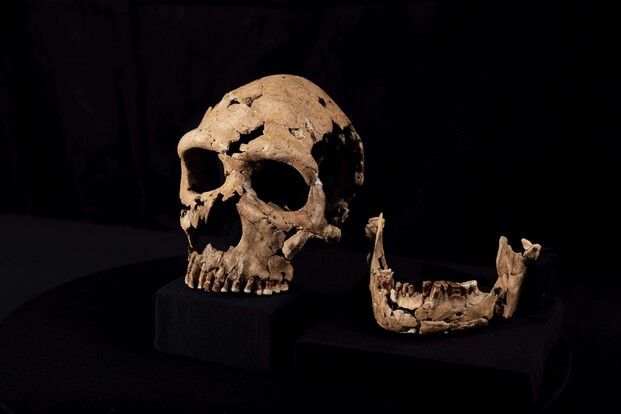It is the oldest of the faces, the one that emerges from the reconstruction of the skull of a Neanderthal woman who lived 75 thousand years ago. She was more than 40 years old, a remarkable age for her times and giving her a face again starting from at least 200 bone fragments was the result of a very complicated puzzle, solved by a group of archaeologists led by the University of Cambridge, a work to whom the BBC Studios Science Unit dedicated a documentary.
The starting point, we read on the British university website, was a flattened skull just two centimeters thick, reconstructed from hundreds of bone fragments found in 2018 in Iraqi Kurdistan, inside the Shanidar cave, used by Neanderthals as burial site and known since 1960. Perhaps because the bone remains that made it possible to reconstruct the face were the most complete, they had not been numbered as had happened to the others found in the same cave but indicated with a name: Shanidar Z. The position in where her remains were found indicates that the woman had been buried leaning on her side, with her left hand under her head and a rock behind her head as a pillow.
Graphical representation of the location where the Neanderthal woman was probably buried (source: Emma Pomeroy)
“Neanderthal skulls have huge brow ridges and are chinless, with a protruding central face that results in more prominent noses. But the recreated face suggests that these differences were not actually so clear-cut,” observes paleoanthropologist Emma Pomeroy, of the University of Cambridge’s Department of Archaeology. Looking at the woman’s face, adds the researcher, “it perhaps becomes easier to understand how crossbreeding between Neanderthals and Sapiens occurred, to the point that almost all living people today still have Neanderthal DNA.”
According to the authors of the reconstruction, Shanidar Z’s head had been crushed by a landslide probably shortly after his death, when the skull had not yet filled with earth. Once recovered and consolidated, the remains were analysed, extracted from the sediment and recomposed at the University of Cambridge.
Shanidar Z’s crushed skull, upon discovery (source: Graeme Barker)
Over 200 fragments were reassembled by Lucía López-Polín, to the point of reconstructing the skull in 3D, returning it to its original shape, also with the help of forensic medicine. Once reconstructed, the skull was 3D printed and with the contribution of paleoartists and two identical twins the facial muscles were reconstructed. Since there are no pelvic bones, it was the sequencing of tooth enamel proteins that revealed that Shanidar Z was a woman; her teeth, some of which were worn down to the root, always made it possible to determine her age.

3D reconstruction of the Neanderthal skull (source: BBC Studios/Jamie Simonds)
Reproduction reserved © Copyright ANSA







